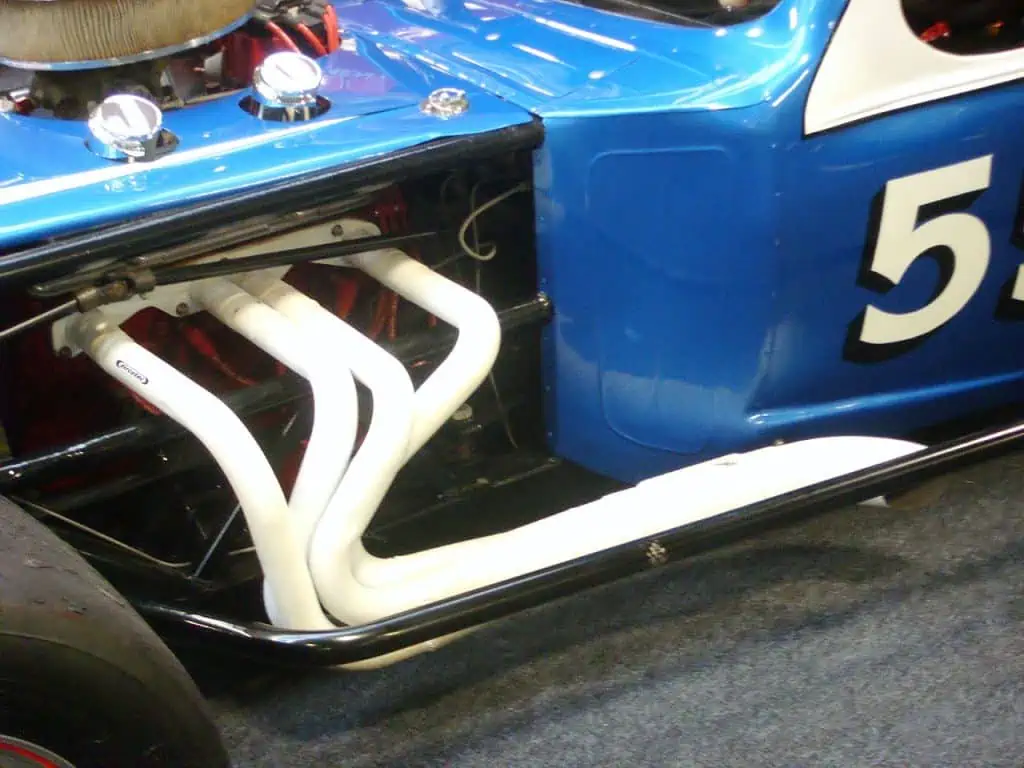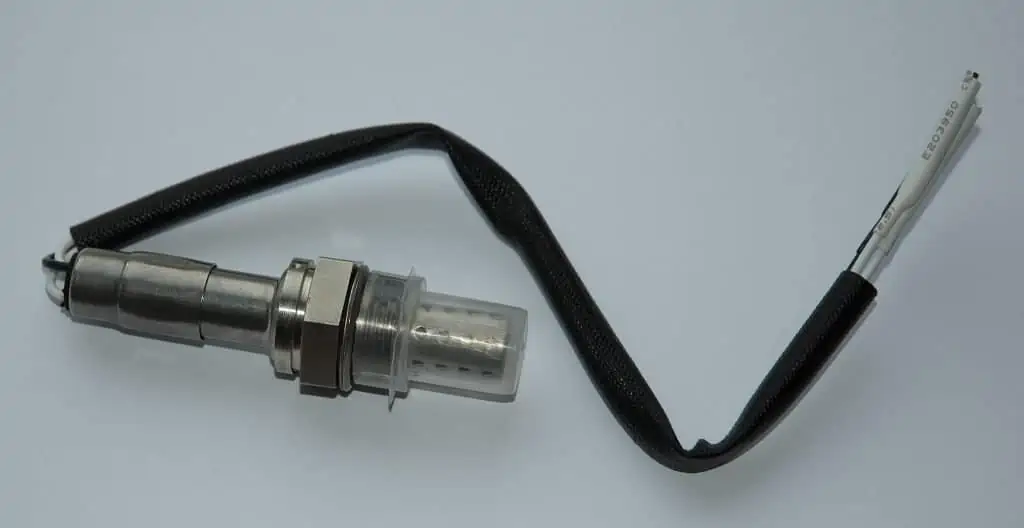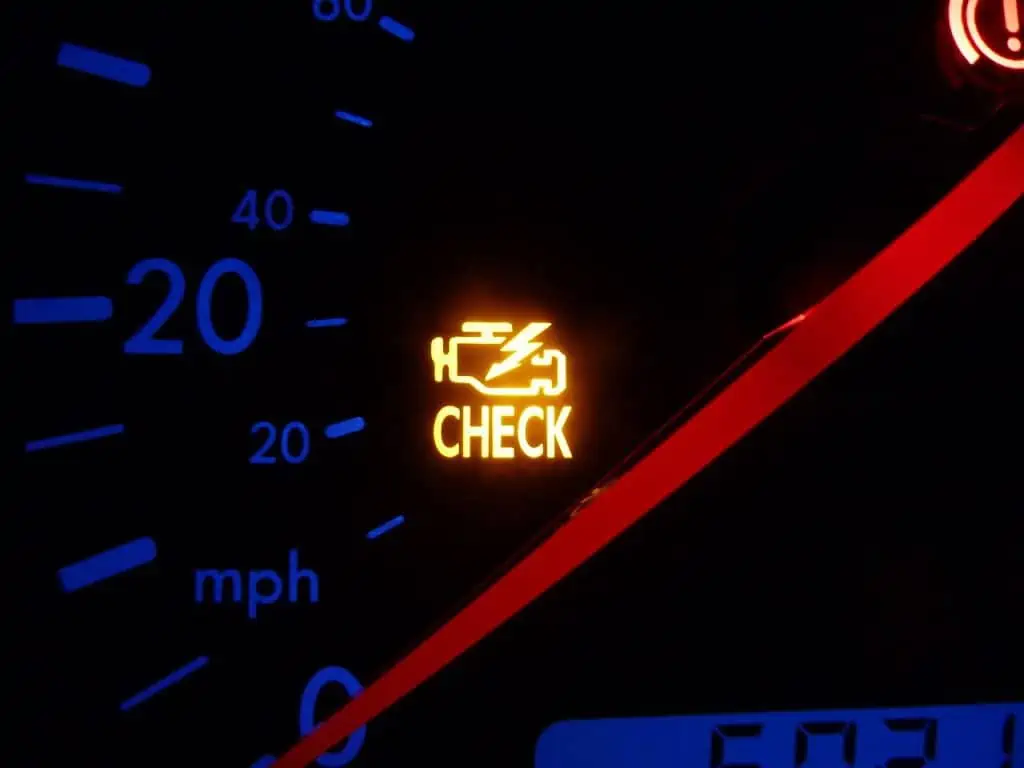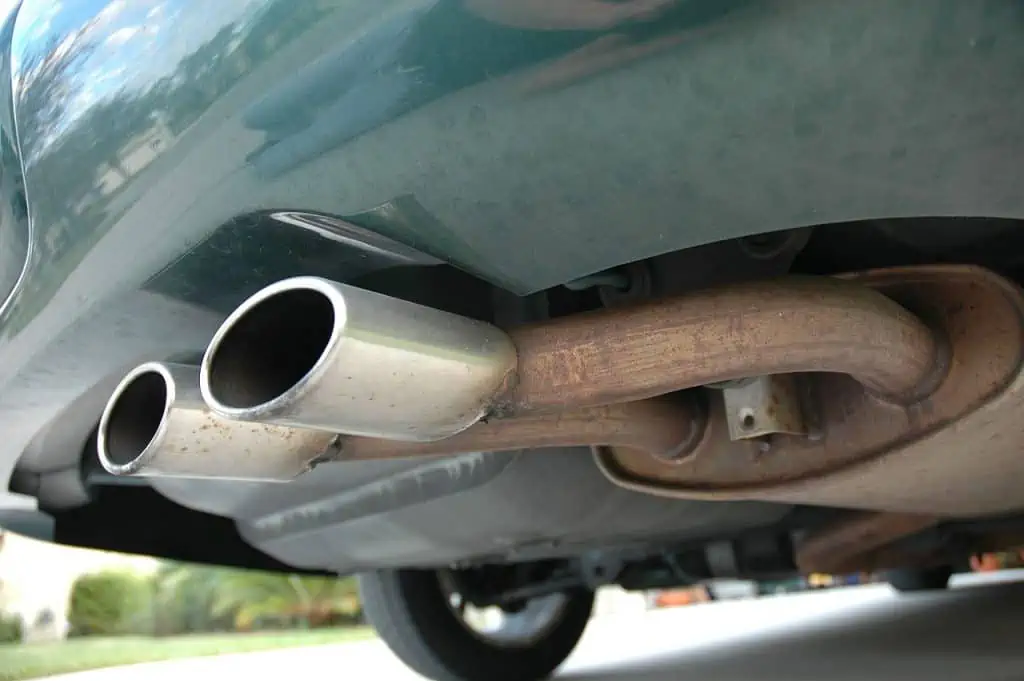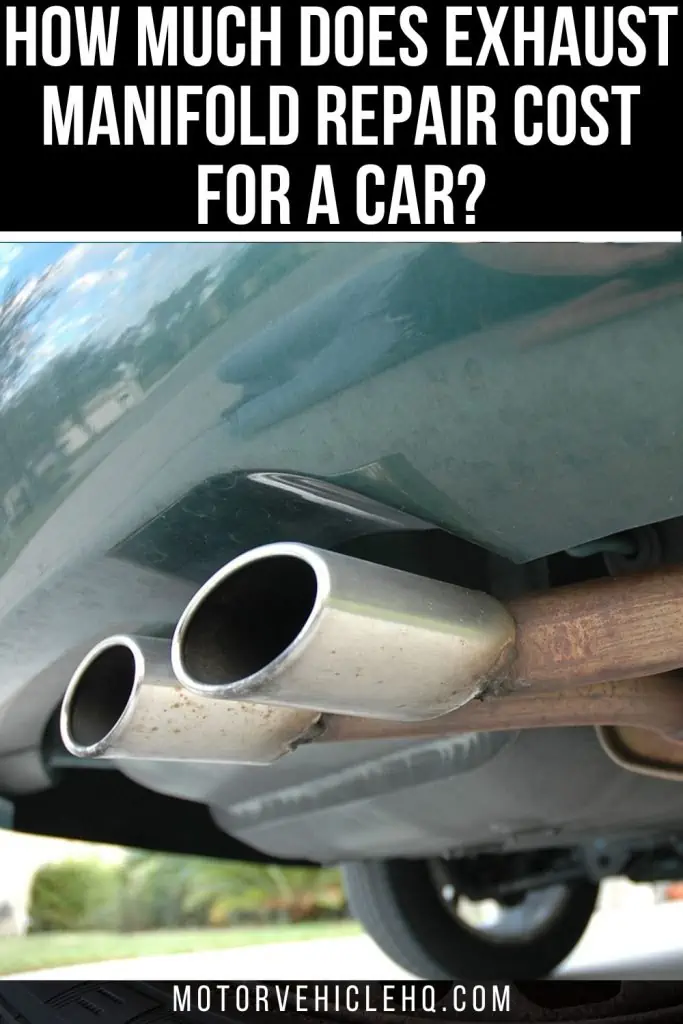The initial component of the car’s exhaust system is the exhaust manifold. It is often made of cast iron or stainless steel devices that collect exhaust gas and deliver it to the exhaust pipe, collecting the exhaust gases from several cylinders into one pipe.
With the exhaust manifold being such a crucial component of your car’s gas system, a crack that develops over time could cost you money to fix.
In addition to the expense of replacing the fractured piece, there are also substantial labor charges. In light of the foregoing, you might be asking why there is such a fuss over an exhaust manifold. We now respond to that query. What an exhaust manifold is, how and why it cracks, how to fix it, and other topics will all be covered.
The average cost to repair a damaged exhaust manifold is between $570 and $900; the labor component of this cost accounts for the majority of this cost, costing between $400 and $550, and the ports cost between $130 and $340.
Let’s explore a little further to learn what an exhaust manifold is and what it accomplishes for your car. It’s crucial to understand the steps involved in repairing a damaged exhaust manifold and how much it will cost, depending on whether you take your car to a dealership or a local auto shop.
An Exhaust Manifold: What Is It?
There are two different sorts of exhaust manifolds, depending on the kind of vehicle and its engine. It could be a group of pipes or a cast iron manifold assembly. As previously explained, the exhaust manifold gathers the cylinders’ consumed exhaust gases and sends them to the tailpipe before the vehicle is completely evacuated.
Ceramic-coated exhaust manifold by Carandbike / CC BY-SA 3.0. Exhaust manifolds come in two varieties based on the type of car and its engine. A cast iron manifold assembly or a collection of pipes could be the object.
The leftovers of burned air and fuel from the engine’s combustion process are what makeup exhaust gases. The components’ ongoing expansion and contraction over time may cause the manifold to crack.
These cracks/leaks can be quite dangerous since they can unleash searing hot exhaust fumes. It may also impair engine performance and harm more engine components.
On rare occasions, an exhaust manifold leak is caused by a damaged mounting bolt. In this situation, the mechanic must take out the damaged bolt or stud. Depending on how complicated the matter is, they might charge an additional cost for this. In a nutshell, the procedure is as follows:
- Find out if the manifold has a crack.
- Remove and replace the defective exhaust manifold.
- Clean the cylinder head and check the exhaust bolts.
- Reinstall the gasket and exhaust manifold.
- To check for any exhaust leaks, start the engine.
Most single-car engines are V-shaped and connected to two exhaust manifolds by default. One of them is for the first bank of cylinders, and the other is for the second bank.
1. The Cast Iron Exhaust Manifold
Cast iron exhaust manifolds typically have a longer lifespan. The cost to repair a fractured exhaust manifold may not be so expensive when high-quality components were used. Exhaust manifolds of contemporary vehicles are made to fit into tighter places since they are less bulky.
An owner may replace the cast iron manifold with headers if they desire additional power and performance. Again, that’s not what they were designed for, even though these aren’t the most resilient.
Furthermore, as they age and become heavier, those manifolds become more fragile. The cost of repairing an exhaust manifold may rise due to aging and decomposition.
2. The Tubular Steel Exhaust Manifold
Because they offer a greater airflow, tubular steel exhaust manifolds are frequently used in performance vehicles like sports cars or anything else that needs more horsepower.
This form of the manifold is built of stainless steel or normal steel, depending on the manufacturer, as you would have guessed from the name.
Although it costs more to make stainless steel, this adds to its dependability and durability. Mild steel, in contrast, doesn’t endure as long. As a result, exhaust manifolds could need to be repaired or replaced quite frequently.
What Is the Mechanism Under Which the Exhaust Manifold Functions In a Car?
The exhaust system of a car or truck is largely controlled by the exhaust manifold, which keeps your car running smoothly and prevents overheating.
A manifold gasket by Alison Cassidy / CC BY-SA 3.0. You may protect yourself and your other passengers from the dangerous exhaust by using the proper exhaust manifold gaskets.
Since this important component plays a role in bridging the exhaust port and the engine’s cylinder head and directing the hot exhaust into the exhaust pipe, you will need to estimate the exhaust manifold repair cost if it is damaged.
With the right exhaust manifold gaskets, you can keep the harmful exhaust from entering your vehicle and endangering you and your other passengers.
It is very important to keep your exhaust manifold in good functioning order and keep it free of cracks to keep you and your passengers safe as well as the health of your car and your passengers.
Almost every car has an engine that is V-shaped and has two exhaust manifolds linked to it. These exhaust manifolds come in two different configurations, one for each cylinder bank.
What are the Possible Exhaust Manifold Leak Symptoms?
The component of your car that joins the engine to the exhaust system is called the exhaust manifold. It is in charge of gathering all the exhaust and directing it into the catalytic converter, where it is processed before going into the muffler and tailpipe.
For longevity, this manifold is typically fashioned from a solid piece of metal, however, it is not damage-proof. Keep an eye out for these typical indications that your exhaust manifold needs to be repaired right away.
1. A Burning Scent Emanating from the Car
A burning odor coming from the engine compartment is another sign that there is a problem with the exhaust manifold. The excess heat can harm neighboring plastic and electrical components if the exhaust manifold has a heat shield problem or exhaust leaks.
Exhaust manifolds can get hotter over 900 degrees Fahrenheit, which can burn up any components that are close or come into contact with them.
Any burning smells should be investigated to make sure they are not a serious problem because burned components can emit a plastic burning smell, which is occasionally accompanied by smoke and can cause other problems.
An awful smell of burnt rubber or plastic greets your nostrils when you lift the hood of the car. When burned or overheated, gasket coatings emit a plastic or rubber odor.
Damaged manifolds are unable to transfer heat effectively, which leads to damage to the gaskets and condensed exhaust leaks.
2. Issues with Performance
When you accelerate the car, a leaky exhaust manifold frequently manifests as a sudden or progressive loss of power. When your car isn’t as responsive as it once was, it’s pretty obvious.
To shift into the next gear, you need to depress the pedal more firmly. A crack or other comparable damage will have similar effects on the ability to accelerate in a manifold with a damaged gasket.
3. Very Poor Fuel Efficiency
Having to visit the petrol station far more often than necessary? When the manifold is destroyed, fuel economy suffers because the exhaust is no longer properly kept under pressure.
In addition to the previously noted power loss, doing this makes your car require more fuel to cover the same distances. Within a few months, a new gasket or manifold can pay for itself in fuel savings.
4. Very Loud Noise from Exhaust
While the vehicle is running, if the gasket or any other component of the exhaust system has a hole, it will make loud noises.
The engine is connected to the exhaust system by the exhaust manifold. The catalytic converter is in charge of processing the exhaust before it enters the muffler and tailpipe. It is responsible for collecting all the exhaust and directing it there.
However, damage to the manifold frequently results in tapping or hissing sounds coming from the engine’s rear. The failure of the manifold not only results in issues there, but it also has the potential to harm the catalytic converter.
You might hear obnoxious grinding noises if the component is destroyed. These noises alert you that the engine in your car can no longer maintain compression. It is advised to delay driving the car until you can have a mechanic inspect it.
5. Clearly Visible Damage
You can turn your attention to your eyes once a fractured manifold has stopped tingling your olfactory or acoustic senses.
You might spot a crack if you closely examine the manifold’s side. Even if it were skin-tight, the engine might as well be crushed up against it. The fact that you cannot see the harm does not imply that it does not exist.
Comparatively speaking, exhaust manifold maintenance expenses are affordable despite the decreased acceleration and loud noises.
What Causes a Leak In an Exhaust Manifold?
There may be several causes for an exhaust manifold leak, which may necessitate exhaust manifold repair. Now let’s go through a few of them.
1. Cracks In the Exhaust Manifolds
The engine is always operating under conditions of tremendous pressure and soaring temperature. A leak in the manifold can be caused by a metal crack. The crack may initially be paper-thin, but as time goes on (and more heat is used by the manifold), it will start to widen.
The crack might eventually self-seal as the metal stretches. Additionally, the sound caused by the damage will become less audible.
2. Leaks In the Manifold Gaskets
The gasket, which is quite similar to the exhaust manifold, must withstand the hot metal’s contraction and expansion. Failure has symptoms that are comparable to those of a fractured manifold, and things could get worse quickly.
Gaskets for the exhaust manifold seal the whole exhaust system, making them an essential component of the vehicle. The drivability and performance of the vehicle may suffer if the gaskets fail.
3. Broken or Loose Bolts
The continuous heating and cooling operations could cause the studs and bolts holding the exhaust manifold together to become brittle. Broken bolts are among the more frequent issues in this situation. However, the repair itself may be a nightmare.
What Happens If You Ignore an Exhaust Manifold Repair?
There shouldn’t be any questions at all in this situation. You must keep up with every component of your car if you want it to run smoothly. There are numerous reasons to exercise greater caution when a component is as crucial as the exhaust manifold.
1. Low Fuel Mileage
Your car’s gas mileage will suffer if the exhaust manifold is damaged. This occurs as a result of the oxygen sensor’s intricate response to the exhaust manifold.
Not all vehicles have these, but for those that do, a damaged exhaust manifold could cause it to provide a false reading. The engine is instructed to burn through the air more quickly when that occurs.
A leaky exhaust manifold typically presents as a sudden or gradual loss of power when you accelerate the vehicle. It’s quite clear when your car isn’t as responsive as it previously was.
2. Gas Accumulation In the Cabin
The exhaust gases will accumulate in the engine compartment as opposed to leaving through the tailpipe. Why does that matter? The car’s temperature control system pulls air from the area close to the engine bay.
Some of the exhaust gases that are leaking from the engine bay may end up inside the car’s cabin, exposing the occupants to poisonous chemicals.
3. Failure of Other Exhaust Parts
Occasionally, other engine bay parts can sustain damage from an exhaust manifold leak. Hot exhaust fumes can melt wires or set items on fire when they leak through a broken manifold (the ones made of flammable materials).
4. Emission Test Failures
Emission testing is necessary for some states and cities. If your car’s exhaust manifold is fractured, it won’t pass that test. The Check Engine Light may come on as a result of this issue. Your vehicle will fail without any additional inspection if the CEL is on.
Unfortunately, there isn’t a quick answer for these varied problems. Drivers have attempted to use heat-resistant epoxy, such as JB Weld, to combat the issue. Despite being a fantastic product, JB Weld cannot survive exhaust gases that are 1,200°F in temperature.
The broken exhaust manifold must be replaced, and that is the only option. Once the new manifold is installed, these issues should no longer exist.
There are further justifications for replacing a broken exhaust manifold. The temperature inside exhaust manifolds can rise quickly under heavy operation, such as while pulling large loads.
The studs and/or bolts anchoring the material to the cylinder heads are put under a great deal of stress as a result of the manifold expanding due to the rising temperature. The bolts or studs will eventually fail a hundred expansion and contraction cycles later.
Liken this situation to how a paper clip bends. It will eventually crumble in your hand once you’ve had enough of pushing it back and forth. The exhaust gasket may blow out the manifold since it is only partially fastened to the engine’s cylinder head.
As a result, air can enter the exhaust stream and the exhaust gases can escape. The oxygen sensor (O2) is quickly thrown off and produces strange values.
The catalytic converter(s) will be damaged if the oxygen sensor decides that the engine is running leaner than usual and instructs the fuel pump to pump in more fuel.
Furthermore, the cast iron break will cause the oxygen sensor to give false readings due to the exhaust manifold’s uneven expansion and contraction. Not to mention, the unpleasant sounds caused by the leak make for a miserable riding experience.
How Can You Diagnose and Repair an Exhaust Manifold Leak?
Do a visual inspection of the engine bay as a first step. Do not inspect the engine immediately after a drive; instead, wait several hours for it to cool.
One of the typical indications of an exhaust leak is black soot on the manifold, so look out for that. If the cracks or loose bolts were apparent, it would be simpler for you to fix them. To make sure the bolts are torqued, you can also attach a tool to them.
Utilizing a vacuum cleaner to search for leaks is the simplest method. Place the cleaner in the exhaust pipe after turning off the car’s engine. It is necessary to arrange the vacuum so that it forces air into the exhaust.
A three-wire car oxygen sensor by Mnemo / CC BY-SA 3.0. Both air and exhaust gases are susceptible to entering the exhaust stream. The oxygen sensor (O2) immediately goes haywire and generates odd readings.
Check for bubbles by spraying some soapy solutions onto the exhaust. There is a leak if there are bubbles.
How Can You Carry Out the Exhaust Manifold Repair?
The replacement of an exhaust manifold leak is not difficult. To remove the manifold, you simply need a couple of deep sockets and wrenches.
The remnants of the prior gasket can be removed with light grit sandpaper or emery cloth, but we’ve discovered that a scraper works better, especially in confined spots. The required equipment is available at your neighborhood Home Depot or on Amazon.
What Hardware Do You Need for Exhaust Manifold Repair?
- The exhaust manifold gasket
- A ratchet and socket set
- The penetrating oil
- The wrenches
- A torque wrench
- A jack and the jack stands
- A degreaser
- The towels
- A pair of gloves
- Your car repair manual
The Exhaust Manifold Repair Procedure
- Pull the negative battery cable out. It’s necessary to cool the engine.
- Put the parking brake on. Utilizing a jack, raise the front of the vehicle and set it on the jack stands.
- To reach the exhaust manifold bolts, remove any heat shields or engine covers using the ratchet and sockets. Depending on the engine, it can be simpler from below the car.
- Check to determine if any other components, such as the dipstick tube or the intake pipe for the EGR valve, are detached. The bolts should be taken out and stored.
- Spray penetrating oil on the bolts holding the exhaust manifold together.
- Apply oil to the boils connecting the exhaust manifold collector and the exhaust pipe flange. Give it a 10-minute soak.
- Utilizing the ratchet, slowly but steadily apply pressure to the exhaust manifold’s bolts. Without using too much power, the bolt should pop. If it still won’t budge, spray some penetrating oil on it and give it a couple of hammer blows. The impact vibration allows the oil to penetrate corrosion more effectively.
- After removing all the bolts but the one on the cylinder head, take out the bolts from the collector. Before removing the final bolt and lifting the exhaust manifold, place one hand on the manifold.
- Throw away the old gasket. On the exhaust manifold, spritz some powerful degreaser. After it has dried, examine the manifold for any cracks or carbon buildup. If there is carbon around it, clean the area and replace it if there are cracks.
- Spray the cylinder head as well to prepare the area for the new gasket’s installation. With the towel, clean any residue away.
- Put on gloves before performing this step. Put the fresh replacement gasket on the cylinder head’s studs.
- Put the cleaned manifold back where it belongs. Replace the bolts and firmly fasten them.
- Adjust the bolts’ torque to the specifications listed in the repair manual.
- Right now, assembly is the opposite of extraction. To avoid the bolts from slipping out in the future, recheck the torque after a week of driving.
The ”Check Engine Light” by Wikiuser100000 / CC BY-SA 3.0. Some states and towns mandate emission testing. That test will fail if your car’s exhaust manifold is damaged. This problem might cause the Check Engine Light to illuminate. If the CEL is on, your car will fail without any further investigation.
How Much Does the Exhaust Manifold Repair Cost?
To save money, a lot of people prefer to do their repairs. Only if you are confident in your abilities should you try to fix an exhaust manifold. You can get by with basic knowledge and the appropriate amount of investigation if the issue is identified early on and is not as serious.
The damage from an exhaust manifold leak could become too severe for a typical individual to tackle in its later stages. To execute a successful job, you need the appropriate equipment as well as experience and understanding, and only a professional has these.
Furthermore, it may be difficult to choose where to begin the repair process if you are unable to accurately identify the true source of the damaged exhaust manifold.
Another choice is to shop around for the best price by comparing pricing provided by different mechanics. To save some money and still get the necessary repairs made at a reasonable price, check the costs of components and labor from local retailers and providers in your area.
Exhaust Manifold Repair Labor Cost
To determine how many hours of labor should be charged for any repair, shops typically consult a part and labor guide. In most cases, repairs take two to three hours.
Your labor charges for the two to three hours would be between $80 and $90 per hour at an independent shop, bringing your total to between $160 and $270.
At a dealership, the labor wage is typically higher and averages $110 per hour. You must pay between $220 and $330 after two or three hours.
If you choose to do the repairs yourself, there are no labor fees involved, and you can pick up some useful technical knowledge for the automotive industry.
Exhaust Manifold Repair Cost of Parts
The price of an exhaust manifold gasket will vary depending on the car’s model, manufacture, and year as well as how many cylinders it has.
For instance, the gasket for a 2000 Chevrolet Impala should cost between $20 and $30 at your nearby parts store. If you opt to purchase it from a dealership, the cost rises to about $50, but the aftermarket gasket is perfectly adequate.
If you do it yourself, the repair will only cost you $18 at the costs mentioned above. Alternatively, if you get it done at a dealership, your cost rounds up to $400.
Different exhaust manifold repair costs have been introduced to the market by a few different types of cars.
For instance, a Ford F-Series labor cost ranges from $270 to $350, while parts may be purchased for anywhere from $200 to $340. For a Ford F-Series pickup, the total cost to replace a damaged exhaust manifold ranges from $470 to $690.
The Honda Accord has the lowest repair costs for a damaged exhaust manifold, which range from $90 to $115. The parts range in price from $260 to $460, and the final cost is between $350 to $590.
With parts alone costing between $580 and $850, the Honda Civic has one of the highest expenditures when it comes to exhaust manifold repairs.
When you add that to the labor charges of between $270 and $350, you can pay between $800 and $1000 for a single auto repair. The complexity of the issue is to blame for the high labor costs. Professionals typically need several hours to fix it.
Exhaust pipe muffler by Steevven1 / CC BY 2.5. The easiest way to look for leaks is by using a vacuum cleaner. After shutting down the car’s engine, insert the cleaner into the exhaust pipe. The vacuum must be set up such that air is forced into the exhaust.
The price will vary greatly depending on the type of vehicle you own and whether you’ve previously taken it to a dealership or neighborhood repair.
Can I Continue to Drive If My Exhaust Manifold Is Damaged?
Although it’s technically possible to drive with a broken exhaust, doing so is risky, illegal, and problematic while you’re on the road. Your exhaust is a crucial component of your car that requires quick attention, whether it is just cracked, half hanging off, or entirely detached.
As soon as possible, you (or your mechanic) should take care of any exhaust manifold leaks in your vehicle. Eventually, a leaky manifold may cause other issues, such as an early catalytic converter failure.
Additionally, if carbon monoxide enters the passenger area as a result of an exhaust manifold leak, it may pose a health risk.
You might not even be aware that it needs your care because it’s underneath your car, but it’s still important to keep an eye on it. Failure to maintain your exhaust could lead to a variety of additional problems and concerns.
The Conclusion
The exhaust manifold may be a group of pipes or a cast iron manifold assembly, depending on your engine and the type of vehicle. The exhaust manifold essentially collects the engine’s burned exhaust gases from the cylinders and ejects them through the car’s exhaust system and tailpipe.
The residue of the burned fuel and air from the engine’s cylinders is what makes up the exhaust gases. The engine’s ongoing heating and cooling, which causes constant expansion and contraction of the parts, may eventually lead the manifold to break and leak.
These leaks can be dangerous because hot exhaust fumes can escape and harm other engine compartment components. Engine performance might also be affected by an exhaust manifold leak.
Sometimes a broken mounting bolt causes an exhaust manifold to begin to leak. If this occurs, the mechanic will have to remove the damaged bolt or stud, which could lengthen the time it takes to complete the repair. Depending on how serious the condition is, your mechanic might charge you an extra price.
Burned gasses from the engine are sent through the exhaust manifold. It will ultimately leak because it is in a high-temperature area. Nothing can be done to stop it. When replacing this component, your mechanic should put an anti-seize compound on the bolts. This will lessen the likelihood of cylinder head bolts breaking.
A leaking exhaust manifold poses a risk to one’s health and safety. Hot exhaust gases from the engine could cause a fire by melting surrounding plastic engine compartment components.
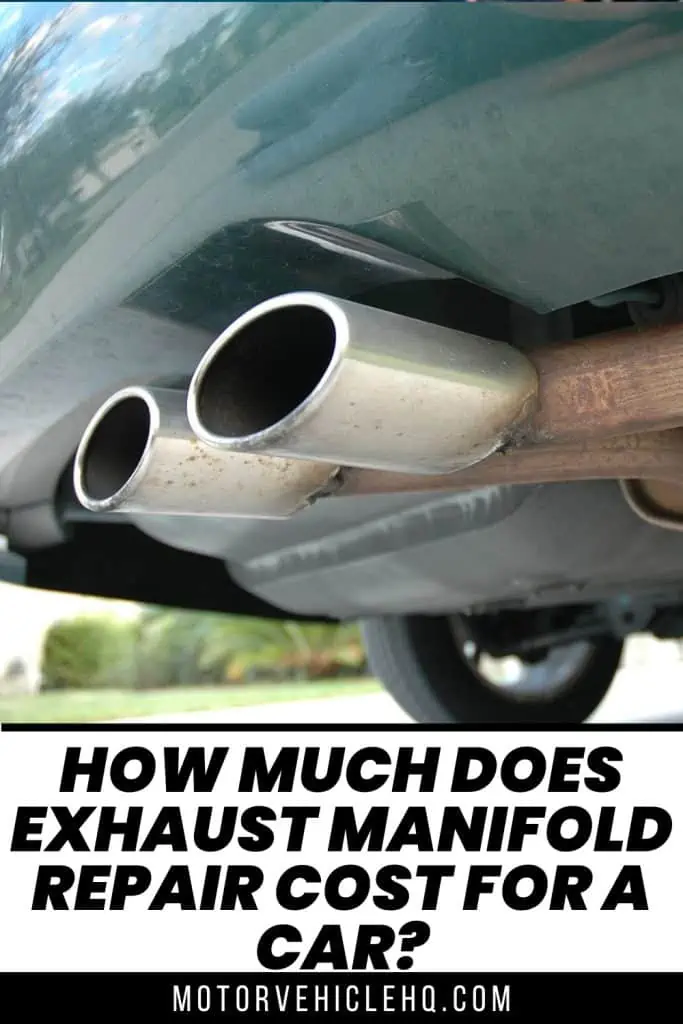
Exhaust pipe muffler by Steevven1 / CC BY 2.5.

Jim Wicks is the founder of MotorVehicleHQ. With over two decades of experience in the automotive industry and a degree in Automotive Technology, Jim is a certified car expert who has worked in various roles ranging from a mechanic, car dealership manager, to a racing car driver. He has owned more than 20 cars over the past 15 years. Ask him about any vehicle you see on the road and he can tell you the make, model and year. He loves the aesthetics of all things cars, and keeps his vehicles in pristine condition.
In his free time, Jim enjoys getting his hands dirty under the hood of a classic car or taking long drives along the country roads. His favorite car? A 1967 Shelby GT500, a true classic that, according to Jim, “represents the pure essence of American muscle.”
